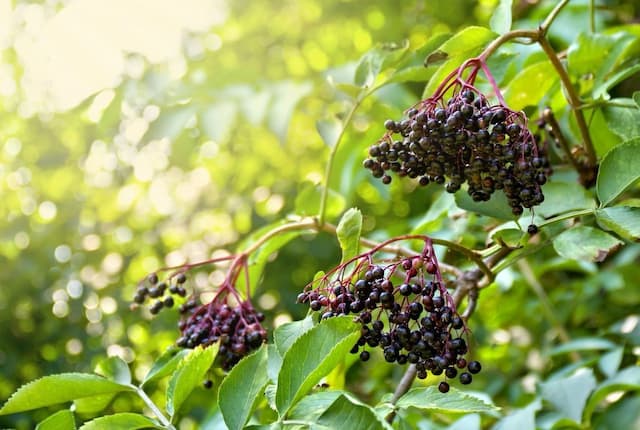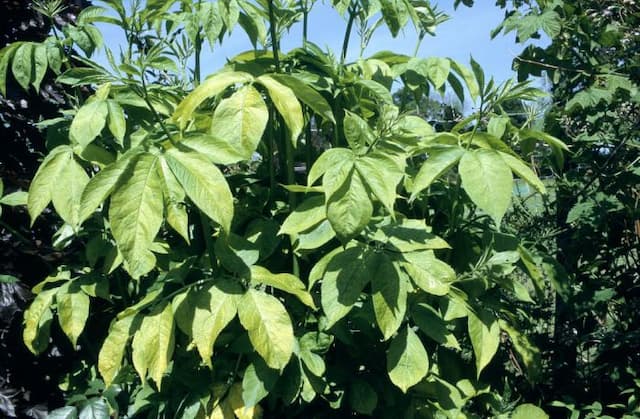Barley Hordeum vulgare



ABOUT
Barley is a type of cereal grain that belongs to the grass family. It typically grows to a height of 2 to 4 feet and has long, slender leaves that are about 1/4 to 1/2 inch in width.
The grain itself is small and oblong, about 1/8 to 1/4 inch in length. Barley is a versatile crop that is used for animal feed, human consumption, and in the production of beer and distilled spirits.
About this plant
 Names
NamesFamily
Poaceae
Synonyms
Bear barley
Common names
Hordeum vulgare var. hexastichum, Hordeum hexastichon
 Toxicity
ToxicityTo humans
Barley is generally considered safe for human consumption, and it is a common ingredient in many foods and beverages. However, in rare cases, some people may be allergic to barley, which can cause symptoms such as itching, hives, and difficulty breathing.
Additionally, barley may contain mycotoxins, which are produced by fungi that can grow on the grain under certain conditions. Exposure to mycotoxins can be harmful to human health and may cause symptoms such as nausea, vomiting, and liver damage.To pets
Barley is commonly used as a feed grain for livestock, including cattle, sheep, and pigs. While barley is generally safe for animals to consume, it can be toxic in high amounts.
Overfeeding barley to animals can lead to digestive problems such as bloating and diarrhea. In severe cases, it can also cause a condition known as acidosis, which occurs when the pH of the animal's rumen (stomach) drops too low. This can be life-threatening and may require veterinary treatment.
Additionally, some types of barley may contain mycotoxins, which can be harmful to animals if ingested in large amounts.
 Characteristics
CharacteristicsLife cycle
Annuals
Color of leaves
Green
Height
Up to 4 feet
Plant type
Herb
Hardiness zones
2
Native area
Eurasia
Benefits
 General Benefits
General BenefitsVersatility: Barley can be used in many different ways, from animal feed to human food to beer and distilled spirits.
Sustainability: Barley is a relatively sustainable crop, requiring less water and fertilizer than some other crops.
Soil health: Barley is a good rotation crop for farmers, as it can help improve soil health by adding organic matter and breaking up soil compaction.
Economic value: Barley is an important crop for many regions and has economic value for farmers, processors, and manufacturers.
Culinary uses: Barley is a popular ingredient in many types of cuisine, including soups, stews, and salads, and can be used as a substitute for rice or other grains.
Food security: Barley is an important food crop in many parts of the world, particularly in regions where other crops may not be able to grow.
Livestock feed: Barley is a common feed grain for livestock, providing a source of energy and nutrients.
Cultural significance: Barley has been an important crop for thousands of years and has cultural significance in many regions around the world. Medical Properties
Medical PropertiesHigh in fiber: Barley is a good source of both soluble and insoluble fiber, which can promote healthy digestion, lower cholesterol levels, and reduce the risk of heart disease.
Rich in vitamins and minerals: Barley is a good source of vitamins and minerals, including vitamin B complex, iron, magnesium, and selenium.
Antioxidant properties: Barley contains antioxidant compounds, such as phenolic acids and flavonoids, which can help protect against cellular damage and reduce the risk of chronic diseases.
Anti-inflammatory effects: Barley contains compounds such as beta-glucans, which have been shown to have anti-inflammatory effects and may help reduce the risk of inflammatory diseases such as arthritis.
Blood sugar control: Barley has a low glycemic index, which means it can help regulate blood sugar levels and reduce the risk of type 2 diabetes.
Weight management: Barley is low in fat and calories, making it a good choice for weight management and weight loss.
Skin health: Barley extract has been shown to have anti-inflammatory and antioxidant properties, which may help improve skin health and reduce the signs of aging. Air-purifying Qualities
Air-purifying QualitiesBarley does not have significant air-purifying qualities.
 Other Uses
Other UsesBuilding material: In some regions, barley straw has been used as a traditional building material for thatched roofs and walls.
Fuel: Barley has been used as a source of fuel in some regions, where it is burned as a biomass fuel for heating or cooking.
Crafts: Barley stalks have been used in traditional crafts, such as basket weaving and thatching.
Musical instruments: In some cultures, barley has been used to make musical instruments, such as flutes and pipes.
Bedding: Barley straw has been used as a natural bedding material for livestock, due to its absorbent properties and low dust content.
Soil erosion control: Barley has been used as a cover crop to help prevent soil erosion and improve soil health in areas with high wind or water erosion.
Beer brewing: While beer brewing is a more common use of barley, there are some unusual types of beer made from barley, such as smoked beer, chocolate barley wine, and lavender barley ale.
Interesting Facts
 Feng Shui
Feng ShuiThere are no specific uses of barley in Feng Shui.
 Zodiac Sign Compitability
Zodiac Sign CompitabilityThere is no direct association between barley and astrology.
 Plant Symbolism
Plant SymbolismSymbolically, barley has been used in many cultures throughout history as a symbol of abundance, fertility, and prosperity.
In some cultures, barley has been associated with the goddess of fertility and agriculture, and has been used in fertility rituals or as a symbol of the harvest. Barley has also been used as a symbol of resilience and survival, as it is a hardy crop that can grow in harsh conditions. In some cultures, barley has been associated with the sun or with masculine energy, due to its association with strength and vitality.
 Water
WaterBarley should be watered regularly, but not over-watered. The soil should be kept consistently moist, but not waterlogged.
How often to water depends on the growing conditions and soil type, but as a general rule, barley should be watered when the soil surface feels dry to the touch. In many cases, watering once a week should be sufficient. Light
LightBarley can tolerate a range of light conditions, from full sun to partial shade. In general, barley grows best in full sun, but it can also tolerate some shade. If growing barley indoors, it should be placed in a bright, sunny location, such as a south-facing window.
 Temperature
TemperatureBarley is a cool-season crop and can tolerate cold temperatures, even freezing temperatures. It grows best in temperatures between 50-75°F (10-24°C). Barley can survive temperatures as low as 28°F (-2°C) and as high as 85°F (29°C). If growing barley indoors, the temperature should be kept within this range.
 Pruning
PruningBarley generally does not require pruning. However, if the plants become overcrowded, or if there is any diseased or damaged plant material, it can be removed to promote healthy growth. In general, barley plants will naturally self-prune as they grow.
 Soil
SoilBarley grows best in well-draining, fertile soil that is rich in organic matter. The ideal soil pH for barley is between 6.0 and 7.5. The soil should be loose and well-aerated, as this will help promote healthy root growth. If the soil is too heavy or compacted, the barley plants may not grow as well.
 Repotting
RepottingBarley does not typically require repotting, as it is usually grown outdoors in the ground.
 Humidity & Misting
Humidity & MistingBarley is a relatively low-maintenance plant that can tolerate a range of humidity levels. However, it generally prefers a moderate to low humidity level, as high humidity can promote the growth of fungal diseases. The ideal humidity range for barley is between 40% and 60%.
 Suitable locations
Suitable locationsIndoor
Growing only as microgreen or as cat grass
Outdoor
Cultivated all over the world as a summertime cereal crop.
Hardiness zone
3-10 USDA
 Life cycle
Life cycleGermination: The first stage in the life of barley is germination. This occurs when the barley seed is planted in moist soil and begins to absorb water. The seed then swells and the embryo within the seed starts to grow. Germination typically occurs within 3 to 7 days after planting, depending on the temperature and moisture level of the soil.
Vegetative growth: After germination, the barley plant enters a phase of vegetative growth, during which it produces leaves, stems, and roots. This stage lasts for several weeks, and the plant will continue to grow until it reaches its maximum height of around 2 to 3 feet. During this stage, it is important to keep the soil moist and to fertilize the plants as needed.
Flowering: Barley typically begins to flower in the spring, around 50 to 60 days after planting. During this stage, the plant produces spikes, which contain the flowers and eventually the grain. The flowers are wind-pollinated, and the plant produces large amounts of pollen.
Grain development: After flowering, the barley plant enters the grain development stage, during which the flowers are fertilized and begin to develop into mature grains. This stage lasts for several weeks, and the grains will gradually become larger and heavier as they mature.
Harvest: The final stage in the life of barley is the harvest, which typically occurs in the late summer or early fall, around 100 to 120 days after planting. The barley plants are cut down and the grains are harvested and processed for use in various products, such as beer, flour, and animal feed. Propogation
PropogationPropogation time
Spring - early summer
Barley is typically propagated through seeds, and it is not commonly propagated through vegetative means such as cuttings or division.
The ideal time to sow barley seeds is in the early spring, when the soil temperature is above 45°F (7°C). The specific months of propagation may vary depending on the climate and geographic location. In general, the best time to plant barley is in late winter to early spring, before the last frost date in the area.
 Pests
PestsAphid, Slugs and snails, Armyworms, Cutworms, Wireworms
 Diseases
DiseasesPowdery mildew, Rust, Smut



![Elder [Black Tower]](/_next/image?url=https%3A%2F%2Fplants-admin.emdemapps.com%2Fimages%2Fplants%2F%2Fimages%2F604b5cad99578.png&w=640&q=75)





